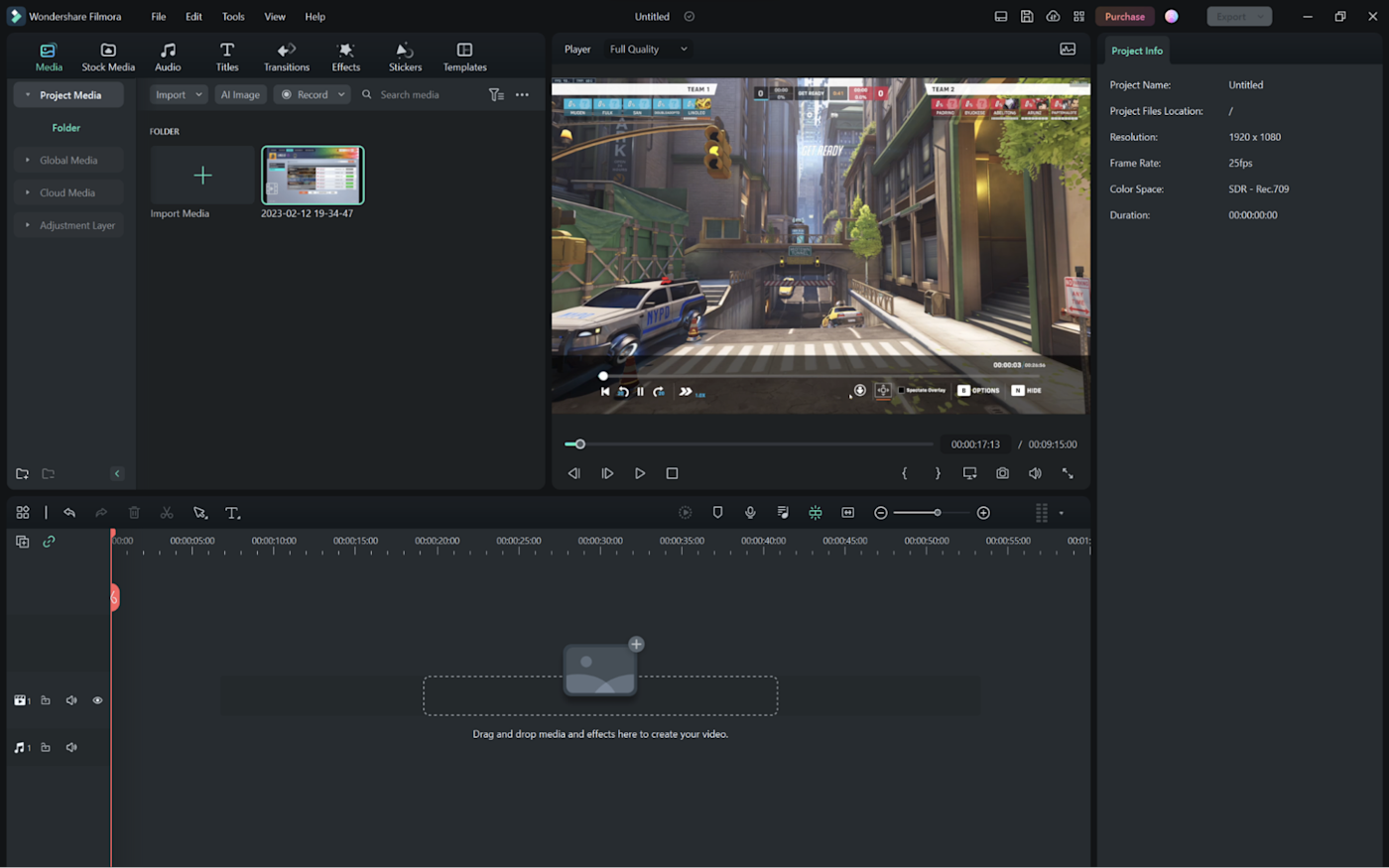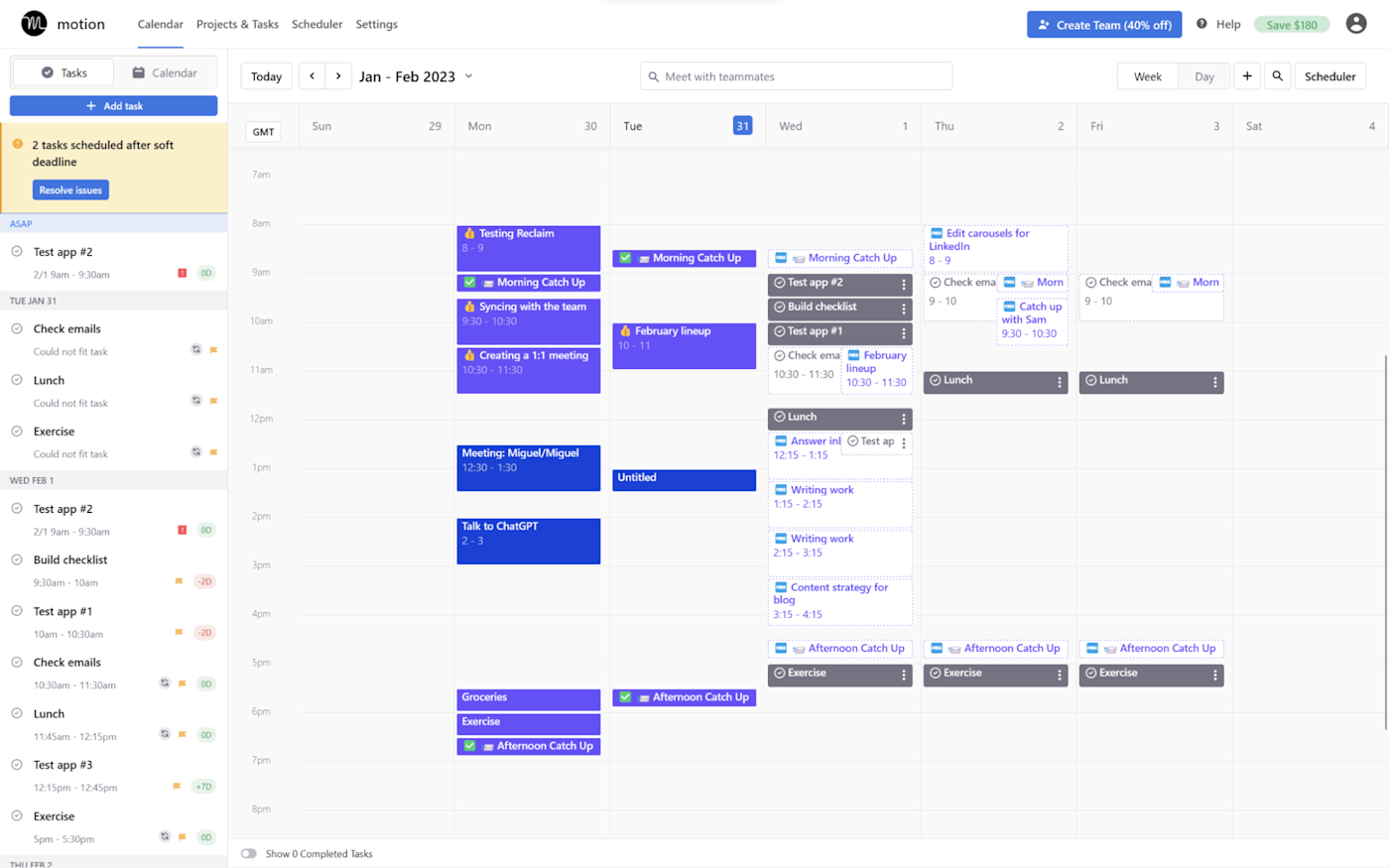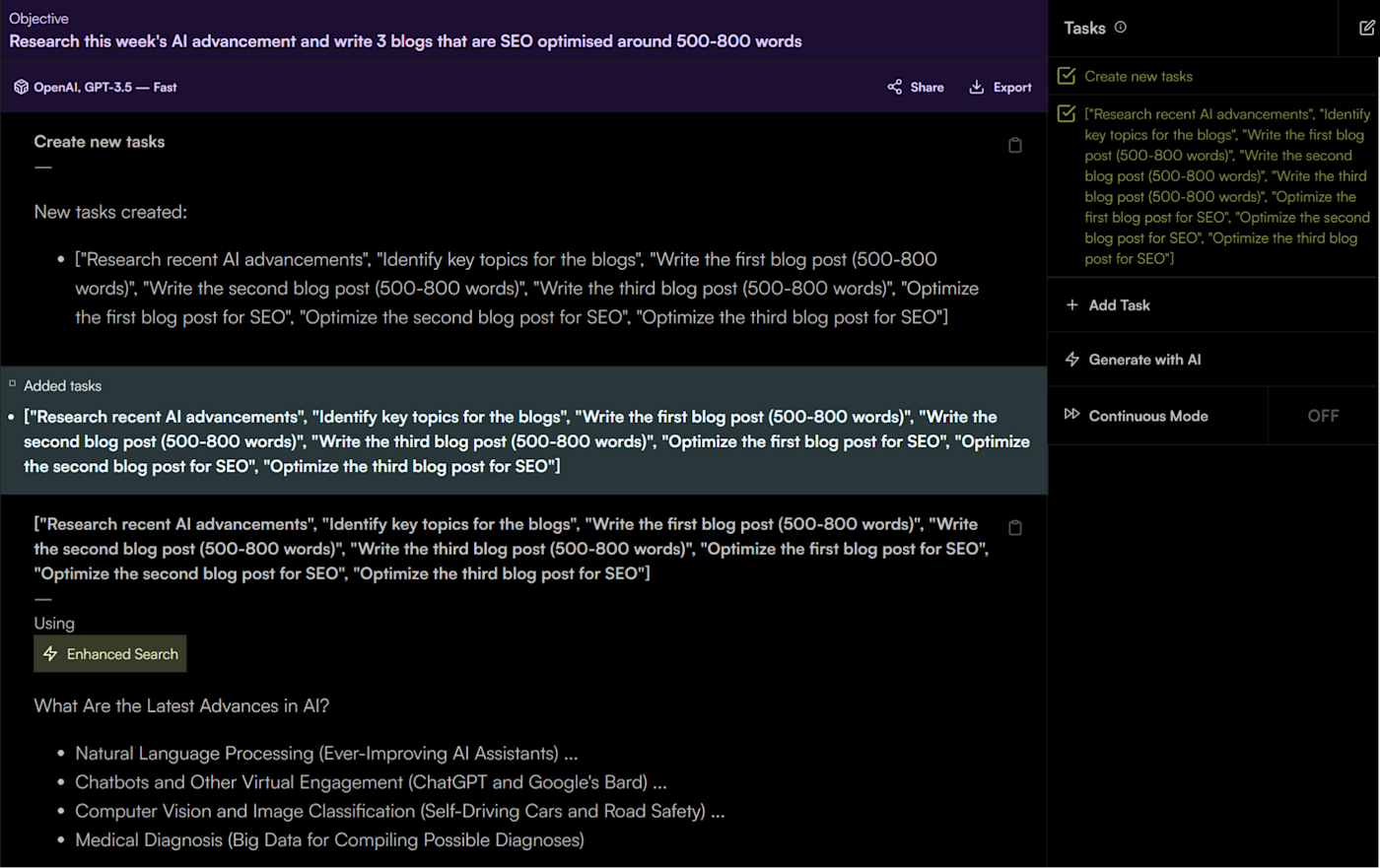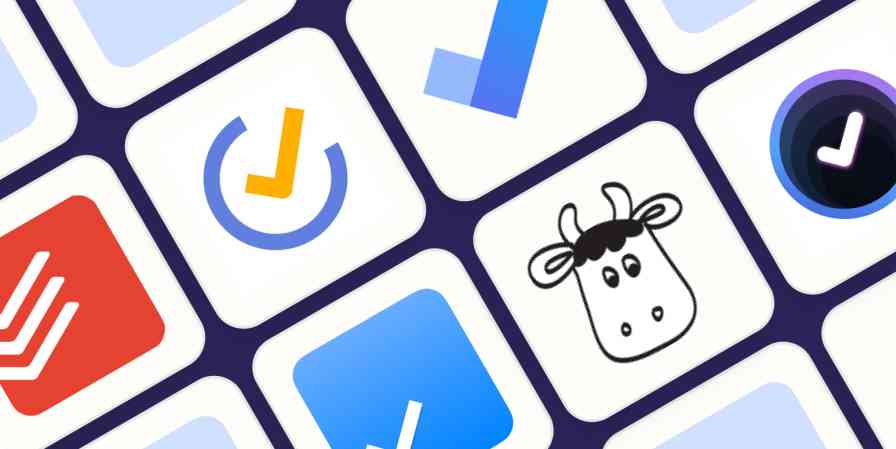The best AI productivity tools in 2023
Everyone's hanging out with ChatGPT, asking for anything from full blog posts to what a particular line of code does. The results are mind-blowing. And while we're still figuring out how to plug this technology into our workflows, it's clear that AI tools are changing the game.
But despite being the most popular, ChatGPT is far from the first AI app that hit the market. I've been playing around with AI tools for a while now, so I set out to build a list of the best ones available. What I found were hundreds of AI tools to kickstart productivity, save time, and generate ideas.
After lots of research and testing from me and the team at Zapier, here are 36 AI productivity tools that will change the way you work.
The best AI productivity tools by category
Chatbots (ChatGPT, Bard, HuggingChat)
Grammar checkers and rewording tools (Grammarly, Wordtune, ProWritingAid)
Video creation (Descript, Wondershare Filmora, Runway)
Image generation (DALL·E 2, Midjourney, Stable Diffusion)
Note-taking (Mem)
Transcription and meeting assistants (Fireflies, Airgram, Krisp)
Slide decks and presentations (Decktopus, Beautiful.ai, Slidesgo)
3D modeling (Spline AI, 3DFY.ai, Meshcapade)
AI agents (AI Agent, AgentGPT, HyperWrite)
Automation (Zapier)
How I selected the best AI productivity app in each category
My AI app database has just crossed the 250-entry threshold. I’m pretty sure there's still a lot out there, with many new apps being launched every week.

Full transparency: I haven't tested them all (yet). The list you're about to see contains a collection of great AI productivity tools tested by Zapier's app review team, myself included. If there's a particular category you like, check out the best apps lists we've put together for them—or if we're still in the process of writing that list, run a quick Google search to find more options.
While all these apps are getting better every day, they're far from perfect: be sure to always check AI's work with your human brain. With that being said, please keep all hands and legs inside the vehicle—it's time to explore.
1. AI chatbots
The best place to start is the category that brought AI to the mainstream. AI chatbots allow you to chat with an AI large language model, letting you ask questions and get answers in a conversational style. The best chatbots use advanced reasoning and logic, write code, and make mathematical calculations.
Take a look at the full list of chatbots in our article on the best AI chatbots.
ChatGPT

ChatGPT is the current industry leader, and the first chatbot that set the scene on fire. It's powered by OpenAI's GPT-3 and GPT-4 models, and it's surprisingly flexible and very easy to use. Learn how to use ChatGPT, understand how it works, and discover how to use it to write marketing copy, do market research, or write sales emails.
When you connect ChatGPT to Zapier, you can automate ChatGPT, so you can access the power of the AI chatbot from within any of your favorite apps.
Bard

Bard is Google's answer to ChatGPT. It's being actively worked on to increase accuracy and to integrate it with other Google products such as Search and Workspace. Find out more about it in our ChatGPT vs. Bard comparison.
HuggingChat

HuggingChat is the open source alternative, receiving contributions from many developers on Hugging Face, the collaborative AI platform. I've found that the accuracy isn't as high as the two mentioned above, but it's interesting to see how it feels by comparison.
2. AI apps for content creation
Entire movies have been made about writer's block. These apps are here to break it. By entering your prompts, starting from templates, or using recipes, you can use AI models as a co-writer, helping you put together first drafts faster.
Browse all the possibilities in our list of the best AI writing generators.
Jasper

Jasper is a powerful AI content creation platform, favoring users who need a high volume of content. It packs dozens of templates to help you get started, connects to the internet to find research and sources, and also lets you generate images with AI. All your content creation needs are covered here.
You can also connect Jasper to thousands of other apps using Zapier. Learn more about how to automate Jasper or try one of the pre-built workflows below.
Copy.ai

Copy.ai is a slower-paced option, acting as a writing co-pilot. Each of your prompts generates a list of options, and it's up to you to pull the best ones into your document. This is better for writing tasks that require more ideation and iteration, such as copywriting.
Find out how more in our Jasper vs Copy.ai comparison.
Anyword

Anyword helps marketers create content by breaking the generation process down step by step. First, you add your prompt to generate a few titles. Then, you can pick your favorite and see a generated outline. Once you tweak that outline to what you want to cover, you can move forward to generating the final piece.
3. AI apps for text enhancement
Spell-checking has been around for a long time, but AI is changing the game. Before, it only detected spelling and basic structure errors. Now, it can spot tone and complex language and offer suggestions to make your writing clearer.
Discover all the available apps in our list of the best grammar checkers and rewording tools.
Grammarly

Grammarly is the mainstream spell- and structure-checking app. It's a complete solution that keeps your English on point, lets you adjust your tone, and suggests shortcuts to simplify wordy or complex phrases. It has plenty of extensions and integrations, so you can use it almost anywhere there's a text box.
It has generative text features, too. Learn how to use them in GrammarlyGO.
Wordtune

Wordtune helps you find plenty of wording alternatives to improve your text. When you input the text you want to check, you can easily browse synonyms, ask to rewrite entire sentences, and adapt the suggestions into a final draft.
ProWritingAid

ProWritingAid is a direct competitor of Grammarly, offering plenty of statistics to help you track grammar, style, and spelling scores. One of the main advantages here is its lifetime plan, helping you leverage all these features without adding a new recurring bill. Find out which is the best for you in our ProWritingAid vs. Grammarly comparison.
4. AI apps for video generation
While full-blown video generation is still coming together, there's already a set of video tools that leverage AI to enhance video, remove backgrounds accurately, and even paint a few new images into each frame.
For the full list, see our picks for the best AI video generators.
Descript

Descript transcribes your videos into a script. Then, instead of using a timeline to trim the audio and video tracks, you edit the text script. As you do so, the video gets trimmed automatically. The rest of the editing works in a similar way, cutting the time to edit your talking head videos. Find out how it simplifies your audiovisual workflows in our walkthrough.
When you connect Descript to Zapier, you can automate the work better suited for computers, so you can focus on the creative side of things. Here are a couple of pre-built workflows to get you started.
Wondershare Filmora

Wondershare Filmora has been around for a long time. Now, it also brings to the table a set of AI features that let you remove backgrounds, denoise low-quality clips, and improve sound quality. All this with the classic video editing user experience, so you'll never feel lost.
Runway

Runway is a video magic wand. It has a set of interesting features that helps you generate video with AI, train your own AI models, and paint parts of frames using text prompts. The learning curve is very rewarding, and the app is growing at a great pace. Be sure to check it out.
5. AI apps for image generation
An image is worth a thousand words, but you don't need so many to generate a beautiful one with AI. These image generators take a text prompt and deliver the results—and this can be anywhere between mind-blowing to nightmare-inducing. They're both hugely entertaining and highly useful.
Read more about our picks for the best AI image generators.
DALL·E 2

DALL·E 2 is an image generator by OpenAI, the creators of ChatGPT. It's very simple to use and produces interesting results, no matter if you've just started writing image prompts or are already a master. A great choice to begin exploring the realm of AI image generation.
You can connect DALL·E 2 to Zapier to do things like automatically create images from transcripts, chat messages, or any other apps you use. Here are some examples.
Midjourney

Midjourney is impressive. Anything you throw at it generates incredible results—even if sometimes they're slightly off the mark. The fact that you have to use Discord to access it feels unintuitive at first, but once you get the hang of it, you'll be spending hours turning your imagination into colorful pixels.
Hit the ground running with our guide for how to use Midjourney.
Stable Diffusion

DreamStudio, powered by the Stable Diffusion AI model, is versatile and offers plenty of controls to help you prompt your way to the results you want. You'll have to invest a bit more time and learn how to control the model, but the reward is well worth it.
Here's how to use Stable Diffusion with DreamStudio.
6. AI apps for note-taking
We take notes because we know that one day they'll be useful. The problem is many of the notes we take will never float back to the surface. It's a real challenge to find the information we need exactly when we need it. There aren't many apps tackling this issue effectively, but Mem has consistently impressed me.
Mem

Mem uses AI to tag and connect the notes you take, so you don't have to spend time organizing them. You can just gather bits and pieces of information, store them, and trust that Mem's AI features will keep everything connected and organized. When the time comes to search for those notes, you can browse the automatic tags and use the search bar to find all you wrote about each topic that matters to you.
Keep feeding your intelligent second brain by connecting Mem to Zapier, improving data transmission and opening up more automation opportunities. Here are a few examples to get you started.
7. AI transcription apps and meeting assistants
Taking notes in meetings may reduce your focus, so why not scrap that activity entirely? AI transcription/meeting assistant apps are great to turn voice into text, letting you browse it later. This will help you be more present in your meetings and, at the same time, be able to thoroughly analyze the transcription later.
Pick your favorite in our lists of the best transcription apps and the best AI meeting assistants.
Fireflies

Fireflies is great to transcribe all your meetings, tracking the conversation topics along the way. It has its own bot called Fred that can handle summarizing the meeting's contents, generating text, and searching through your history to meet your query.
Integrate Fireflies with Zapier to connect Fireflies to thousands of other apps. Here are a couple of examples.
Airgram

Airgram has all the core transcription features too. But it also adds AI data extraction on top of it, helping you extract bits of information, such as currencies, people, or places from unstructured data.
You can integrate Airgram with Zapier to automatically upload meeting notes to the cloud and automate your other meeting workflows. Here are a couple examples of how to get started.
Krisp

Krisp is actually an audio optimization tool that reduces background noise to help you sound better in meetings. While you can use it to improve your podcast or other important recordings, you can also use it to assist you in your meetings by transcribing everything.
8. AI apps for scheduling
No one loves the back and forth of setting up meetings, or any of the extra work tied to scheduling your work for the day. In an ideal world, you'd just look at your calendar, hop on meetings, and start your tasks at the marked date and time. We're getting closer to that, as AI can already take some trouble out of scheduling your work and your life.
See the full list of the best AI scheduling assistants.
Reclaim

Reclaim does a great job protecting your habits, so you never miss your weekly fitness objectives or your reading targets. More than that, it'll defend the time you need to complete important tasks by rearranging your schedule.
Clockwise

Clockwise is better for teams, promising to save you one hour per week—and to show you that it works, it'll schedule a one-hour break shortly after you start using it. You can adjust the settings to create your ideal day where work, breaks, and meetings live in harmony.
Motion

Motion focuses on project management, helping you keep track of all the tasks you still have to complete. By tweaking each task priority, you'll be telling the AI engine when it should land on the calendar and how to place the other tasks around it.
By connecting Motion to Zapier, you can automatically create new Motion tasks from Slack messages, emails, and any other tool you use at work. Here are a few examples to get you started.
9. AI apps for email and inbox management
People spend about one month per year managing their work email inbox—no, I didn't make this up. With so many messages to follow up on, it can feel like email is driving you away from what really moves your work forward. You can start cutting the admin time here by using an AI email assistant to categorize, generate reply drafts, and keep everything up to date.
SaneBox

SaneBox starts by scanning your inbox, understanding who you usually communicate with, which newsletters you receive, and what useless emails arrive every day. Based on that, it can help you delete unwanted emails, prioritize important messages, and add tags to keep things organized.
EmailTree

EmailTree is a solution for customer support teams, helping you organize your inbox, follow up on messages, and automate a few replies. It does this by processing the emails you receive and suggesting the follow-up action that makes the most sense. It's then up to you to trigger it.
10. AI apps for presentations and slide decks
Your magnetic stage presence is what people came for, but they stayed because of your beautiful slide deck. Clean and beautiful slides support your performance, keep your audience engaged, and help you drive in the points that you're making. The problem? Creating a solid slide deck can take a decent chunk of time, especially if you're starting from scratch. Can AI help?
Read more about presentation software with our picks for the best PowerPoint alternatives.
Decktopus

Decktopus is simple and fun to use. You enter what your presentation should be about, the target audience, and the objective. It'll put together a full presentation with text and slides, with plenty of magic buttons scattered around the user interface, helping you change images or generate text. Great for starting with a solid first draft and honing it into a powerful final version.
Beautiful.ai

Beautiful.ai delivers on its name's promise. It simplifies the process of putting together a beautiful slide deck, with all the layouts and styles figured out. Pick the colors, find royalty-free images in the library, and start putting together your presentation. If you have data that changes frequently, you can update it by using sliders and tables. The values will then change dynamically on the presentation.
Slidesgo

Slidesgo will let you pick the topic, writing tone, and a general template. AI generates the whole presentation for you, and from there, you can add your own content, customize each slide, and use AI to write, generate images, or generate a new slide.
11. AI apps for research
Diving into new topics takes a lot of time, and that's without counting all the tasks you need to do to keep your exploration organized. These AI-powered tools can act as an adventure sidekick, exploring the internet for you, organizing your data into digestible visualizations, and even formatting references correctly.
genei

Genei invites you to add your research projects to the app. Then, list your project's big keywords and topics. The app will search the web for relevant content and offer you suggestions to add new sources. To find out if they're worth it, click the Overview button, and let the AI work for you: it crunches the content, offers a summary, extracts a list of common keywords along with all the images inside—and, to top it off, rounds up all the references to other work.
Aomni

Aomni uses AI agent technology to research topics for you. When you add a question or a topic, it'll generate a task list to find answers, run web searches, read the content on each page, and return a summary of the entire process.
12. AI 3D modeling
AI is spreading out of the 2D world too, generating 3D models you can use in games, virtual environments, or video. It's still in an early stage, but there are exciting developments here that could greatly reduce the time to produce high-quality 3D models and animations.
Spline AI

Spline AI lets you generate scenes, objects, animations, and textures by using text prompts. If you're not happy with the initial results, you can still edit anything either with text or classic 3D tool controls.
3DFY.ai

3DFY.ai is still in beta, but it already takes a text prompt and turns it into a 3D model. It can't generate all kinds of objects yet: right now, you can generate table lamps, sofas, or swords for gaming, among a limited list of possibilities. You can then download it in three different formats and adjust the level of detail and texture resolution.
Meshcapade

Meshcapade focuses on creating avatars, taking 2D pictures and turning them into 3D models. You can then use these avatars for designing clothes, setting up a virtual fitting room on your eCommerce shop, or improving an AR/VR experience.
13. AI agents
Wouldn't it be great if you could have a robotic assistant to complete tasks for you? This is what AI agents are setting out to do. There are definitely rough edges here right now, but as this technology keeps improving, we may be getting closer and closer to working with digital employees that can automate tasks and take more rote work off our plates.
AI Agent

AI Agent lets you create your own agents: pick a name, objective, and which OpenAI model it should use to think (GPT-3.5 Turbo and GPT-4 are available right now). Once it initializes the goal and generates the first task list, you can add your own tasks. Give it some time to complete each step: it can take a lot to process more advanced tasks.
AgentGPT

AgentGPT has a similar layout to ChatGPT, letting you create and manage multiple AI agents. The good? Super intuitive and fast. The not-so-good? Inconsistent results.
HyperWrite

HyperWrite lives inside your Chrome browser, ready to pop out to do stuff for you. It's still in alpha version, so expect plenty of bumps on the road.
14. AI apps for automation
Each of these AI productivity tools is impressive on its own, but when you want to integrate AI into your daily workflows, that means connecting AI to the other tools you already use.
Zapier

Zapier lets you automate faster by using natural language to create workflows that connect thousands of apps. Describe what you want to automate, and Zapier will draft a workflow that you can easily customize. You can even use Zapier to build your own custom chatbot.
Zapier connects to OpenAI, ChatGPT, Jasper, Hugging Face, and thousands of other apps, so you can combine the magic of AI with the power of automation to accelerate the work that matters most.
Learn more about Zapier's AI tools, or read about how to create your own AI digital assistant using Zapier and AI.
AI for productivity: the AI-powered you
I'm a full-blown AI enthusiast. Even still, I like to think that these are merely tools. They save you time, spark ideas, and offer new angles. Remember to always use your judgment and keep your attention on the objective of what you're working on.
Another big risk: losing too much time feeding prompts to the AI, or generating so much output that it becomes difficult to edit, manipulate, and put together. Sharpen your cutting and editing skills to curb the excess, and you'll do great.
With all that in mind, it's time to enjoy. Using these apps is as entertaining as it is useful, at least while the hype remains.
Related reading:
Get productivity tips delivered straight to your inbox
We’ll email you 1-3 times per week—and never share your information.





Comments
Post a Comment